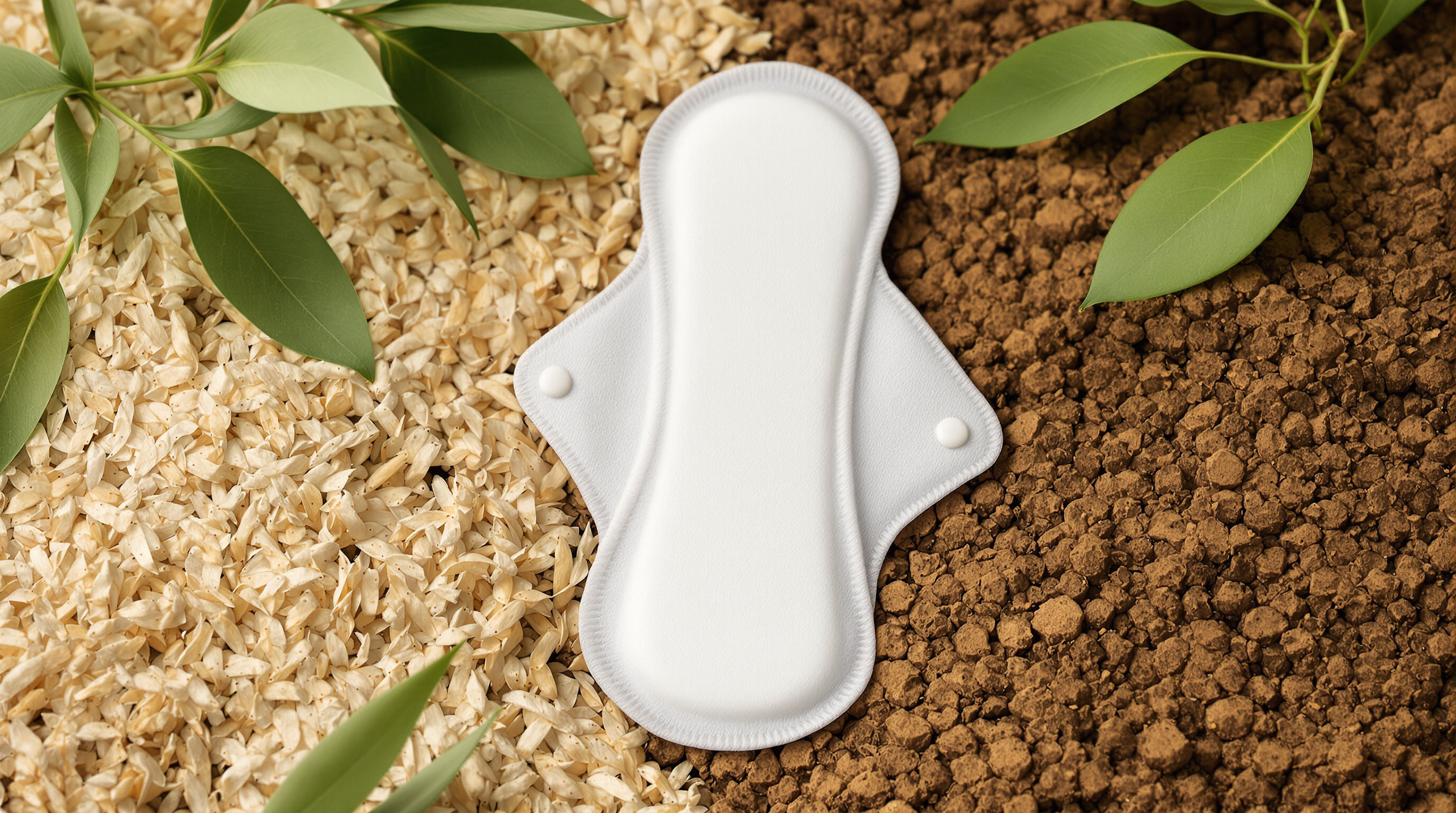تقنيات التحكم في الروائح تسيطر على اتجاهات تطوير الفوط الصحية الليلية
الطلب المتزايد على التحكم في الروائح في الفوط الصحية الليلية
فهم مخاوف المستهلكات بشأن الروائح أثناء الاستخدام الليلي
وبحسب معلومات FemCare من العام الماضي، فإن نحو ثلثي النساء اللواتي يستخدمن الفوط الليلية يضعن التحكم في الروائح الكريهة في المقام الأول من حيث ما يبحثن عنه في المنتج. وعندما تظل هذه الفوط في مكانها طوال الليل، تميل البكتيريا إلى التكاثر بسرعة كبيرة، مما يؤدي إلى تفاقم الروائح الكريهة ويسبب عدم الراحة بشكل عام. ولذلك، باتت السيطرة الجيدة على الروائح عاملاً أساسياً في تقييم ما إذا كانت الفوطة موثوقة أم لا. والسوق يبحث عن منتجات تحافظ على الراحة الجسدية وتدعم الشعور بالثقة النفسية طوال الدورة الشهرية.
العلاقة بين التسرب والامتصاص ومنع الروائح الكريهة
يلعب مدى جودة احتفاظ شيء ما بالرطوبة دورًا كبيرًا في تحديد ما إذا كانت الروائح تتطور أم لا. تنتشر السوائل في اتجاهات متعددة بفضل أحدث تقنية للقلب المُحْيِط، مما يقلل من الرطوبة على السطح بنسبة تصل إلى 40٪ مقارنة بالطرازات الأقدم. وهذا يساعد في منع تكاثر البكتيريا بشكل كبير. كما أن الحواجز الخاصة على الجوانب تمنع حدوث التسرب، مما يعني وجود رطوبة أقل تنتشر في المناطق التي يمكن أن تنمو فيها البكتيريا وتُسبب الروائح. تحتوي بعض المنتجات أيضًا على مواد مضادة للميكروبات مدمجة في طبقاتها الوسطى. تعمل هذه المواد مباشرة على الجراثيم من مصدرها، مما يوفر وسيلة إضافية لمكافحة الروائح غير المرغوب فيها قبل أن تبدأ حتى.
كيف تؤثر راحة الجلد وتحسسه على توقعات المنتج
وفقًا للتقرير السنوي الأخير حول صحة الجلد لعام 2024، فإن حوالي ثلاثة أرباع الفوط الليلية الفاخرة تحتوي حاليًا على مواد خالية من المواد المسببة للحساسية. بدأ المصنعون يهتمون حقًا بكيفية تأثير المنتجات على صحة البشرة. غالبًا ما تحتوي الطبقة العلوية من هذه الفوط على مكون يُعرف باسم عوامل توازن الرقم الهيدروجيني (pH) التي تحافظ على المستوى المناسب بين 5.2 و 5.8. وهذا يساعد في حماية الحموضة الطبيعية للجلد، كما يقاوم الروائح غير السارة الناتجة عن المواد القلوية. لقد شهدنا تحسنًا جيدًا أيضًا. تبدو الأفلام الجديدة المصنوعة من مواد نباتية قادرة على تقليل مشاكل التهيج بنسبة تصل إلى 30٪ مقارنةً بالمواد الاصطناعية التقليدية. إذن، لم تعد الشركات تسعى فقط إلى منع الروائح، بل أصبحت تنتج منتجات أكثر لطفًا مع البشرة الحساسة دون التفريط في فعاليتها.
التقنيات الأساسية المستخدمة في التحكم بالروائح في الفوط الصحية الليلية

عوامل توازن الرقم الهيدروجيني (pH) والطبقات المضادة للميكروبات للتحكم في النمو الميكروبي
تستخدم الأنظمة الحديثة للتحكم في الروائح عوامل متوازنة من حيث الرقم الهيدروجيني مثل مشتقات الحمضيات أو الأحماض اللاكتيكية للحفاظ على بيئة حمضية (4.5–5.5)، والتي تمنع نمو البكتيريا من خلال تعطيل جدران الخلايا الميكروبية. تكمل طبقة مضادات الميكروبات من أيونات الفضة هذه العملية من خلال توفير تثبيط للعوامل الممرضة لمدة تتراوح بين 18–24 ساعة مع خطر ضئيل جداً للتسبب في التهيج، مما يوفر حماية مستمرة طوال الليل.
الكربون المنشط والزيوليت: مواد طبيعية تمتص الروائح
يتم دمج الكربون المنشط والزيوليتات المعدنية في بطانات الفوط لامتصاص المركبات الكبريتية الطيارة مثل كبريتيد الهيدروجين. من خلال آليات الامتصاص الفيزيائي والتبادل الأيوني، تحقق هذه المواد المسامية تقليلًا في الروائح بنسبة تصل إلى 92% في التجارب السريرية دون الاعتماد على تفاعلات كيميائية، مما يجعلها فعالة وغير مهيجة.
تقنيات التغليف لتعطيل المركبات العضوية الطيارة
العوامل المحايدة للروائح الميكروية (كبسولات 3–5 ميكرون) تطلق عوامل طبيعية مثل زيت الليمون أو مستخلص شجرة الشاي عند ملامستها للرطوبة، مما يؤدي إلى تكسير الأمينات والأحماض الدهنية ذات الرائحة الكريهة. يحافظ هذا النظام المُطلق ببطء على كفاءة تصل إلى 80% في إزالة المركبات العضوية المتطايرة لأكثر من 8 ساعات، وهو يتفوق بنسبة 23% على البدائل المطروحة على السطح من حيث مقاومة الرطوبة.
التوازن بين الفعالية وسلامة الجلد في العوامل الكيميائية المحايدة للروائح
استُبدلت العوامل المرتبطة بالروائح المستخلصة من التربينات النباتية بزيت الزنك الريسينولات التقليدي في 68% من الفوط الليلية الفاخرة نظرًا لملف السلامة الأفضل لها. ترتبط هذه العوامل بجزيئات الروائح أسرع بثلاث مرات مقارنة بالخيارات التقليدية، بينما تقلل من مخاطر التحسس بنسبة 41%، وفقًا للتقييمات الجلدية.
ابتكارات في المواد والتصميم تعزز الأداء الليلي
اللبات الماصة المتقدمة والتوزيع عبر القنوات الدقيقة للتحكم في السوائل
لبات ماصة متعددة الطبقات مع تقنية القنوات الدقيقة تمكّن توزيع السوائل بنسبة 40٪ أسرع (مجلة علوم النسيج 2023)، ومنع تجمع السوائل والحفاظ على سطح جاف. تقدم المواد الهجينة مثل خلطات السيلولوز المتشابكة قدرة امتصاص عالية تصل إلى 400 مل على مدى 10 ساعات دون إضافة حجم، مما يضمن الراحة أثناء الاستخدام لفترة طويلة.
أغطية تنفسية وحواجز مضادة للتسرب لراحتك طوال الليل
أغطية علوية محفورة ثلاثية الأبعاد توفر تهوية تزيد بنسبة 62٪ مقارنة بالنموذج القياسي، مما يقلل من إغلاق البشرة أثناء النوم. وعند دمجها مع حواجز التسرب المزدوجة، فإنها تقلل من تسرب السوائل أثناء النوم على الجانب بنسبة 78٪ وفقًا للتجارب السريرية. وتضمن المواد اللاصقة السيليكونية المستخلصة من النباتات تركيبًا آمنًا دون التأثير على سلامة الجلد، وهو فائدة حيوية للفئات الحساسة.
دراسة حالة: كيف تدمج العلامات التجارية الرائدة التحكم في الروائح في تصميم الفوط الصحية
إن النظر فيما يحدث في سوق المنتجات الفاخرة للاستخدام طوال الليل لعام 2024 يُظهر بعض الاتجاهات المثيرة للاهتمام. يركّز المصنعون حاليًا على ثلاث ابتكارات رئيسية. أولاً، يقومون بإضافة طبقات لتعديل درجة الحموضة (pH) مباشرة تحت القلب المُشبّع، وهو ما يساعد في تقليل الروائح من مصدرها. ثم هناك تلك الحواجز الجانبية المُشبّعة بفحم نشط يلتقط كل أنواع المواد ذات الرائحة الكريهة قبل أن تخرج. وأخيرًا، تعتمد العديد من الشركات الآن على مواد قابلة للتحلل البيئي في الطبقة الخارجية دون التفريط في الأداء حتى بعد ثماني ساعات أو أكثر. الجمع بين كل هذه العناصر يبدو أنه يعمل بشكل جيد أيضًا. انخفضت الشكاوى المتعلقة بالروائح بشكل ملحوظ منذ حوالي عام 2021 وفقًا للتقارير الحديثة، ربما بنسبة تصل إلى نصف عدد الشكاوى التي تم تسجيلها. علاوةً على ذلك، فإن استخدام مواد قابلة للسماد يعني أن هذه المنتجات لا تؤدي إلى أداء أفضل فحسب، بل تترك أيضًا ضررًا بيئيًا أقل عند التخلص منها بطريقة صحيحة.
اتجاهات الاستدامة في الفوط الصحية الليلية الخالية من الروائح

طبقات التحكم في الروائح القابلة للتحلل في المنتجات الصحية الصديقة للبيئة
يقوم المزيد من الشركات الآن باستبدال الأجزاء البلاستيكية ببدائل قابلة للتحلل مصنوعة من مزيج من الفحم النباتي ونشا الذرة. الأخبار الجيدة؟ تتحلل هذه المواد الجديدة بشكل أسرع بكثير مقارنة بالبلاستيك التقليدي الذي نراه في كل مكان اليوم. وبحسب تقرير Future Market Insights الصادر العام الماضي، فإنها تتحلل فعليًا بنسبة تتراوح بين 75 إلى 80 بالمئة أسرع دون التأثير على قدرتها على التحكم في الميكروبات. ولا يتعلق الأمر فقط بمعدلات التحلل أيضًا. فقد نظرت أبحاث حديثة نُشرت في أوائل عام 2024 في كيفية استجابة الأشخاص للمنتجات المرتبطة بالاقتصاد الدائري. فما الذي كشفت عنه؟ وجدت أن الأغلبية المفاجئة - حوالي ثلثي المشاركين - أعربوا عن رغبتهم في اختيار بطانات الليل التي تحتوي على حواجز قابلة للتحلل لامتصاص الروائح بدلًا من البطانات التقليدية. مما يشير إلى وجود زخم حقيقي يدعم البدائل الصديقة للبيئة عبر مختلف شرائح المستهلكين في الوقت الحالي.
المضادات الميكروبية النباتية تحل محل المواد المضافة الاصطناعية لمكافحة الروائح
تثبت المستخلصات الطبيعية مثل زيت النيم وزيت الزعتر فعاليتها في تقليل نمو البكتيريا بنسبة 92% في الاختبارات المعملية، مع حدوث تهيجات جلدية أقل بنسبة 40% مقارنةً بالمضافات التي تحتوي على الكلور. وتشهد الأبحاث الجلدية سلامتها للاستخدام لفترات طويلة، مما يجعلها بديلاً عمليًا وصديقًا للجلد للمضادات الميكروبية الاصطناعية.
التصميم الدائري: تقليل الأثر البيئي
تعتمد العلامات التجارية أنظمة حلقات مغلقة حيث يمكن استعادة مواد التحكم في الروائح من خلال التسميد الصناعي أو برامج إعادة تدوير الفوط. ويقلل هذا من النفايات التي تذهب إلى مكبات النفايات بنسبة 55% لكل دورة حياة منتج، مع الحفاظ على الحماية من الروائح طوال الليل. ومن المتوقع أن تستحوذ التصاميم الهجينة التي تجمع بين القلوب القابلة للتحلل الحيوي والحواجز القابلة لإعادة الاستخدام من السيليكون على 35% من السوق الفاخر بحلول عام 2026.
تطور السوق والاتجاهات المستقبلية في الفوط الصحية الليلية
نمو قطاع الفوط الصحية الليلية (2020–2024): العوامل الرئيسية
لقد كانت مبيعات الفوط الصحية للاستخدام الليلي ترتفع باستمرار منذ عام 2020، مسجلةً معدل نمو سنوي لافت بلغ 18.2٪ حتى عام 2024. يأتي هذا الارتفاع مع زيادة الوعي لدى الناس حول العناية الشهرية الصحيحة، وسعيهم لاستخدام منتجات يمكنهم الاعتماد عليها أثناء النوم طوال الليل. أظهر تقرير حديث حول الابتكارات في صحة الطمث أن ثلثي النساء تقريبًا يهتممن اليوم بنفس القدر من حيث التحكم في الروائح كما يهتممن بمنع التسرب، وهو ما يعكس تغيرًا حقيقيًا في أولويات المستهلكين فيما يتعلق بالمنتجات التي يختارونها. كما تثير المخاوف البيئية تأثيرًا كبيرًا أيضًا. فخلال هذه السنوات، أضاف حوالي ثلث الشركات المصنعة مواد قابلة للتحلل إلى منتجاتها، في محاولة للحاق بركب العملاء الذين يهتمون بشكل متزايد بالخيارات الصديقة للبيئة.
تميّز العلامة التجارية من خلال التحكم في الروائح والراحة والابتكار
تتميز أفضل الشركات في السوق بأنظمة تحكم متقدمة في الروائح تدمج بين مكونات توازن الرقم الهيدروجيني ومواد تسمح للجلد بالتنفس بشكل صحيح. وبحسب استطلاعات حديثة، يرغب حوالي ثلاثة أرباع الأشخاص في استخدام فوط صحية تبقيهم جافين طوال الليل مع حماية من الجراثيم التي قد تهيج البشرة الحساسة. وقد أثرت هذه التفضيلات بشكل واضح على جهود البحث والتطوير، حيث تعمل العديد من العلامات التجارية بجد لزيادة كمية السوائل التي يمكن امتصاصها دون التسبب في عدم الراحة. نحن نشهد اليوم ابتكارات ذكية إلى حد ما، مثل المنتجات ذات الحواجز المزدوجة ضد التسرب والأجنحة المصممة لتتناسب مع مختلف وضعيات النوم، والتي أحدثت فرقاً حقيقياً. وبحسب بيانات من 'Consumer Insights' الصادرة العام الماضي، أفاد الناس بحدوث نحو 40 بالمئة أقل من مشاكل التسرب أثناء الليل.
التوقعات المستقبلية: مستشعرات ذكية ومراقبة حقيقية للروائح قيد التطوير
تتميز التصاميم الجديدة بمستشعرات ألياف صغيرة قادرة على التقاط التغيرات في مستويات الرقم الهيدروجيني واكتشاف تلك المركبات العضوية المتطايرة المزعجة قبل وقت طويل من ظهور الروائح الكريهة. تشير بعض الاختبارات المبكرة إلى أن هذه الأجهزة الصغيرة تقلل بالفعل من مستويات القلق بنسبة تصل إلى 27 بالمئة عندما ترسل قياساتها عبر البلوتوث إلى تطبيقات الهواتف الذكية التي تتبع أنماط النظافة الشخصية. في غضون ذلك، تحققت تقدم في تطوير علاجات مضادة للميكروبات من المصادر الطبيعية والنباتية، وهو ما يتماشى مع توقعات المحللين في القطاع الذين يرون أن سوق النظافة الخضراء سيصل إلى 740 مليون دولار بحلول عام 2025 وفقًا لتقرير مجلة الابتكار النسيجي الصادر السنة الماضية. ومع تطور التكنولوجيا وزيادة صداقة المواد للبيئة، يرى الخبراء أن المنتجات الصحية الليلية قد تسيطر على ما يقارب نصف خيارات العناية الطمثية المتاحة بحلول نهاية هذا العقد.
الأسئلة الشائعة
لماذا يعد التحكم في الروائح مهمًا في فوط صحية ليلية ?
إن التحكم في الروائح في الفوط الصحية التي تُستخدم طوال الليل أمرٌ بالغ الأهمية، لأنه يضمن الراحة والثقة لمستخدميها أثناء الاستخدام لفترة طويلة. ويمكن أن تؤدي الروائح غير المُحكَمة إلى الشعور بعدم الراحة وتقليل الثقة وربما الإحراج، مما يجعل التحكم الفعّال في الروائح من الأولويات القصوى لدى المستهلكين.
كيف تساعد المواد مثل الفحم المنشط والزيوليت في التحكم في الروائح؟
يقوم الفحم المنشط والزيوليت بحبس المركبات الكبريتية المتطايرة التي تُعد مسؤولة عن الروائح الكريهة. وتعمل هذه المواد من خلال آليات الامتصاص البدني والتبادل الأيوني دون الاعتماد على تفاعلات كيميائية، مما يوفّر حلاً طبيعياً وغير مهيّج لمشكلة الروائح.
هل هناك فوائد لاستخدام مضادات الميكروبات النباتية؟
تُعدّ المضادات النباتية مثل زيت النيم وزيت الزعتر وسيلة فعّالة للتحكم في البكتيريا تشبه المضافات الاصطناعية من حيث الكفاءة، ولكنها تُسبّب تهيجاً أقل للجلد. وتجعل أصولها الطبيعية منها خياراً أكثر أماناً للاستخدام لفترات طويلة، وتُعدّ بديلاً قابلاً للتطبيق عن المضادات الكيميائية القاسية.


